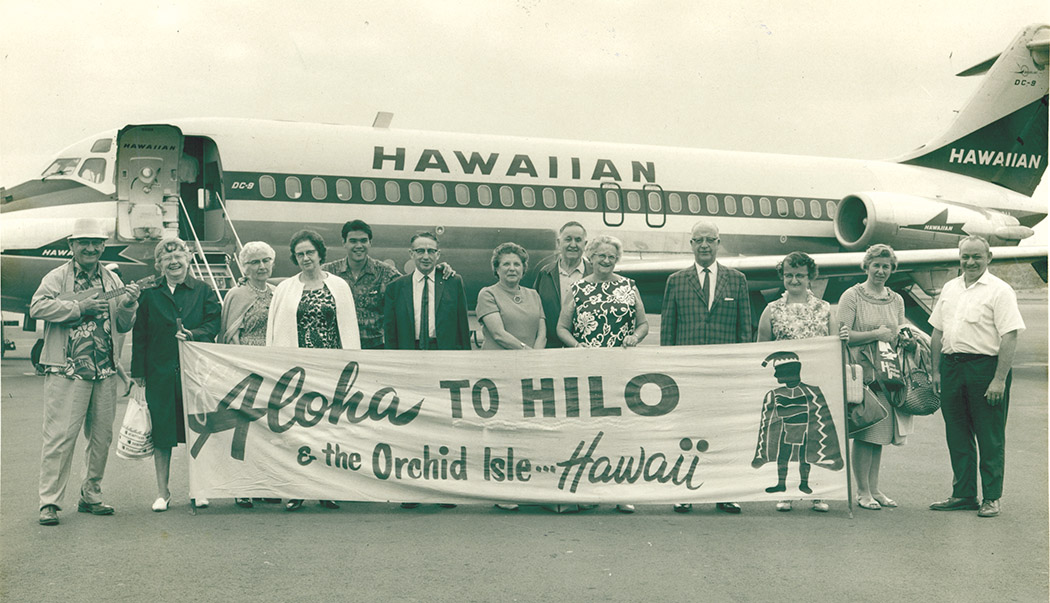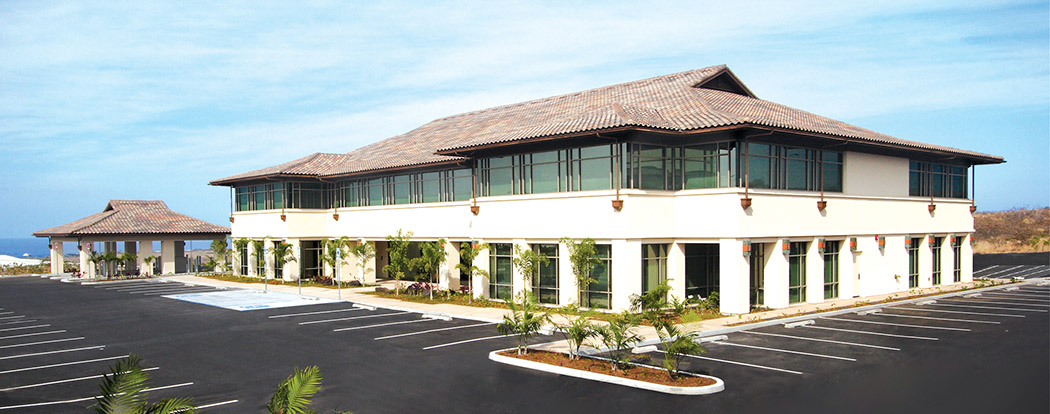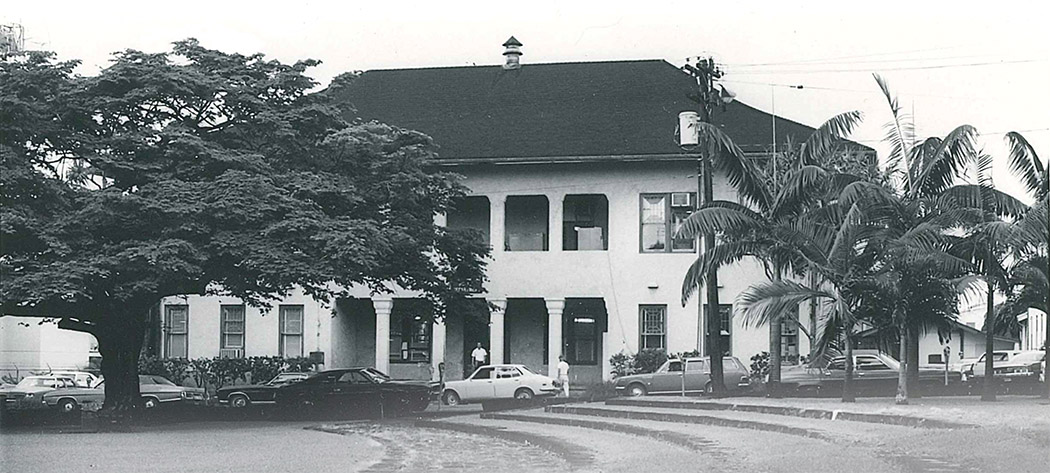
A Bygone Era — Hilo’s Old Courthouse and Police Station

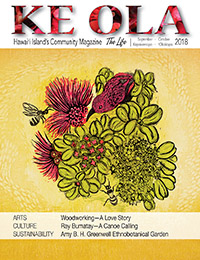
By Marcia Timboy
If walls could talk, an 86-year-old building in downtown Hilo would have a myriad of stories to tell of a wahi pana (special legendary place). In an area where ruling chiefs governed during the pre-contact era, and that later served as a Hawaiian monarchy summer residence, the current building was constructed prior to statehood to conduct territorial law enforcement and civic proceedings.
Known as the “old Hilo police station,” the structure now houses the East Hawai‘i Cultural Center (EHCC), an arts and cultural center, which has provided art exhibits, workshops, classes, and performances to the Hilo community since 1982. Located at 141 Kalākaua Street, in a historically significant area, the town square had governance structures in use since 1817. Across the street, Kalākaua Park, created by King David Kalākaua in 1877, is still utilized for community cultural events, like the annual Hilo Lei Day Festival in May.

History
The two-story structure was built in 1932 from reinforced concrete, is adobe-finished with wooden interiors, and has a hipped roof in asbestos shingle. The building’s outstanding features include leaded-glass-topped double front doors and double hung windows, decorated ventilation openings, and four-columned central front porticos on both the first and second floors. The interior consists of about 16 major rooms of wood construction (per the National Registor of Historic Places).

The second floor housed the district court, including a clerk’s office, judge’s chambers, courtroom, library, and miscellaneous rooms. The first floor housed offices for the sheriff, deputy sheriff, clerks, captain of detectives, filing bureau, the detective bureau, captain’s quarters, and the police station. A central corridor on the first floor served as the connecting channel among all offices. Two indoor stairways lead to the second floor.
In February 1969, the court was moved to a new state office building, and in 1975 the police department moved to a larger facility.
The structure lay vacant for almost seven years until the East Hawai‘i Cultural Council, established as an umbrella group of community arts organizations, secured a 20-year lease from the County of Hawai‘i in 1980. It took about two years of planning, fundraising, renovation, and construction to turn the former courthouse and police station into a culture and arts center.

Well-regarded educator, arts and culture advocate, and longtime Hilo resident, Mrs. Frances Chang Sherrard, spearheaded the movement to acquire the building. Mrs. Sherrard realized the importance of designating the structure as a historic building, thereby preserving some of the cultural landscape of Hilo. Her statement of significance to the National Register of Historic Places follows:
“The district courthouse and police station were built in 1932 to accommodate Hawaii County agencies. It lies in an area that has been the center of government and civic activities for Hilo since 1817. It is bounded on the northeast by the Hawaiian Telephone building, designed by prominent Hawaii architect, Charles W. Dickey, in 1930. The nationally registered historic U. S. Post Office/County Building is to the southwest. Directly across the street is Kalakaua Park established in 1877 by then ruling monarch, King David Kalakaua.”
Plans for the district courthouse and police station were drawn by Frank Futoshi Arakawa (1891–1977), deputy county engineer with the County of Hawai‘i, and one of the first Nisei (second generation Japanese in Hawai‘i) to graduate from Stanford University with a degree in civil engineering. It was the first government building in the county to include accommodations for the automobile in its initial plans.

Completed at the cost of $54,017.49, it was described in the Hilo Tribune-Herald as being “well-planned and attractively decorated,” and that a “modernistic Hawaiian note prevails, with cream [and] brown colors both interior and exterior.”
Shigeru K. Oda, a well-known and long-time contractor in Hilo, was the general contractor; C. M. Yamashita did the painting; and H. Matsuo, one of the first Japanese plumbers and tinsmiths in Hilo, did the plumbing.
Stephen L. Desha Jr., district magistrate for South Hilo, and Henry K. Martin, sheriff, were the first to enjoy the new building.
The building was listed as site 79000752 on the National Register of Historic Places on September 4, 1979 with periods of political and government significance being 1925–1949.
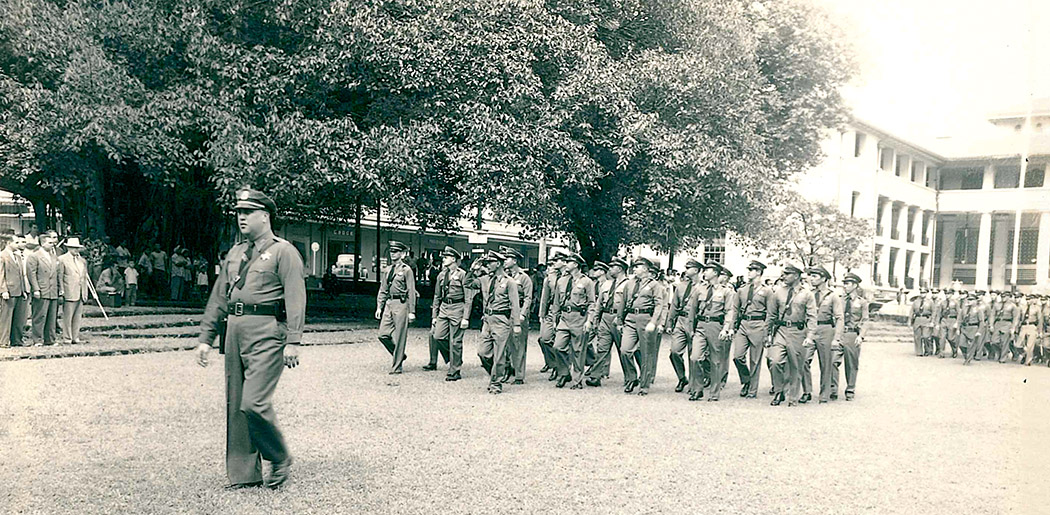
Design
Architect Frank Futoshi Arakawa may have been influenced by the work and efforts of Charles W. Dickey, a prominent architect in Hawai‘i between 1900–1940. Dickey felt a need to adapt his buildings to the local environment, in achieving a Hawaiian style of architecture. In 1926 he stated, “Hawaiian architecture is a type distinctive to itself and Mediterranean styles must be adapted to fit local conditions before they are at all suited to the islands.” He favored larger open spaces and fewer walls, to allow the trade winds to circulate, and roofs with projecting eaves in order to keep rain out without having to close the windows.
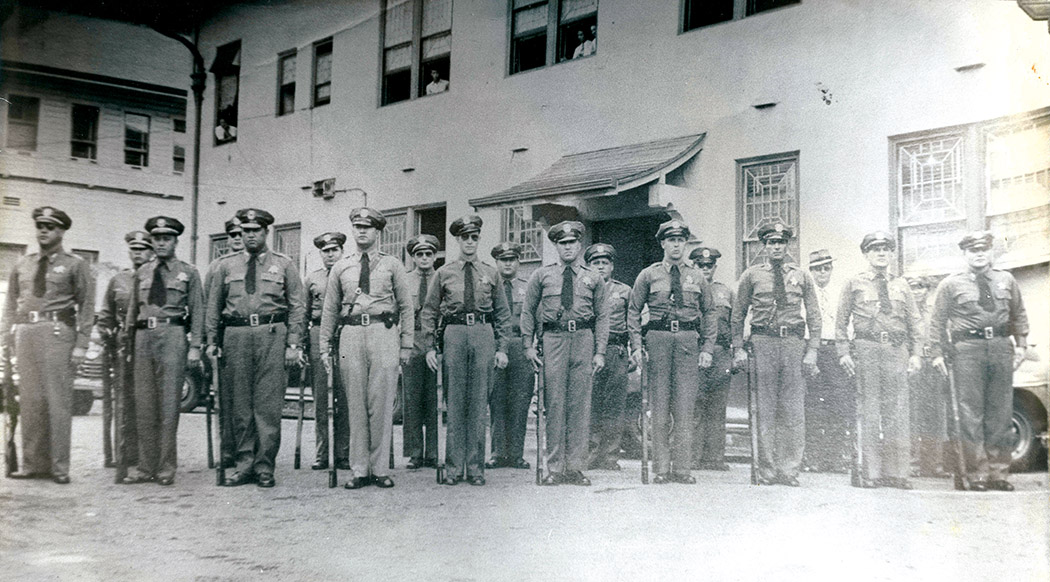
The shape of the roof and the projecting eaves became such a recognizable Dickey trademark that it became known locally as the “Dickey roof”: a hip roof with a double-pitch, that is, a shallower pitch at the eaves. So many other architects have adopted this roof style over the years that it has now become a stereotypical feature of a “Hawaiian sense of place.”
This feature is apparent in viewing the building’s facade, with its spacious lānai (porch/balcony), tall columns, strategic placement of large doors and windows, and wide projected eaves. The building design utilizes Hawai‘i’s temperate environment; trade winds to cool the building, and natural light illuminates the interior; a sense of ease is felt as one navigates through its open floor plan spaces.

Today

As with most old structures, this historically registered building is in dire need of repair; termite damage and the extremely damp conditions from Hilo rains have taken a toll on the structure. Of recent and urgent concern is that a large section of the copper gutter has dislodged from the eaves due to rotting in the roof infrastructure. Upkeep of such a large and historic building is extremely costly, and the East Hawai‘i Cultural Centerʻs Council is currently working with the County of Hawai‘i to address this issue.
This historic building has transformed into an arts and cultural center over the last four decades. The East Hawai‘i Cultural Center strives to be “a vibrant and thriving gathering place centered on art and culture; an inclusive platform for the expression of the rich and complex cultural diversity that defines our communities through exhibitions, performances, workshops, and creative inquiry.”
Voted “Best Gallery” in the Hawaii Tribune-Herald poll in 2016, the current directors and volunteers are working hard to move the Center forward for future generations to come. ❖
For more information: ehcc.org or 808.961.5711
Resources:
The Architecture of Charles W. Dickey: Hawaii and California. Robert Jay. September 1992
Hawai‘i Historical Foundation, https://historichawaii.org/2014/01/27/district-courthouse-and-police-station/
Aloha ‘Aina, Volume II: More Big Island Memories. East Hawai‘i Cultural Center/HMOCA publication. 2015.
Hilo Tribune-Herald, 1932
Statement of Significance, National Register of Historic Places, United States Department of the Interior, NPS. Submitted by Frances Sherrard, July 6, 1979
Mahalo Clark Realty Corp. – Home/Building Story Sponsor
